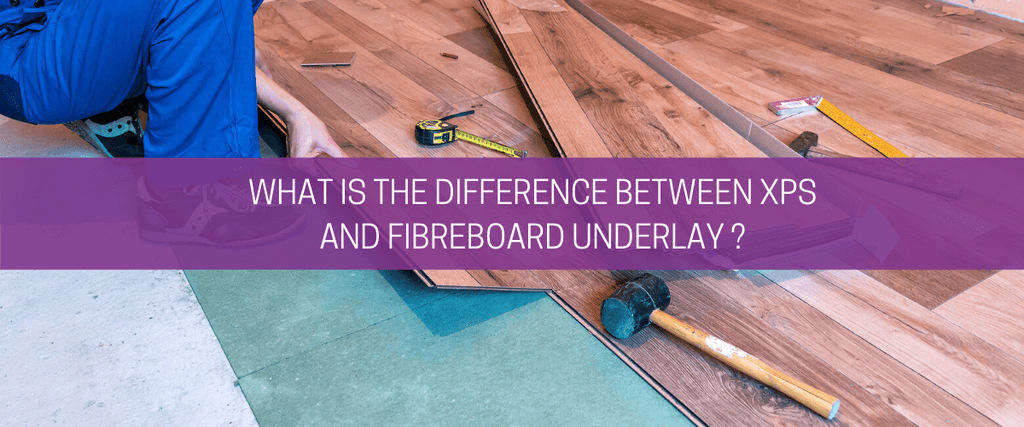What is the difference between XPS and fibreboard underlay?

Not sure whether to buy XPS foam or fibreboard underlay? You’re not alone.
These two products share so many similarities. Laid beneath either wood or laminate, they’re both designed to level out the subfloor and offer many of the same properties (e.g. effective thermal insulation, sound absorption). So, how do you know which is the right one for your project?
Here at Carpet Underlay Shop, we find that customers frequently get in touch wanting to know more about XPS foam and fibreboard. Luckily our experts have fantastic knowledge in this area – and here they attempt to clear up the confusion and explain the subtle differences between the two.
3 differences between XPS foam and fibreboard
Construction
The main difference between XPS underlay and fibreboard underlay is their construction.
Fibreboard is made from a combination of organic raw materials – including wood chips, plant fibres, softwood flakes, sawdust and recycled products (e.g. cardboard, paper). These materials are bonded together using synthetic resin and subsequently compacted to create flat, rectangular sheets.
By contrast, XPS underlay is made from polystyrene foam. It’s manufactured using the very latest technology in extrusion and thermoforming. Essentially, the polystyrene is melted in an extruder machine and then blended under high pressure with a foaming agent. This process causes the polystyrene to take the form of rectangular foam boards, with a very fine closed-cell structure.
Moisture resistance
XPS foam offers superior resistance to damp. Thanks to its unique polystyrene construction, it’s able to stop cold and dampness from passing through (from the subfloor) – and, as such, will help to protect your new wooden or laminate flooring. It’s also fully water-repellent (water absorption < 0.1%) and will not rot or mould, thus making it a practical option for a kitchen or utility room.
Unfortunately, the same cannot be said for fibreboard underlay. Made from organic fibres, fibreboard isn’t resistant to moisture and isn’t recommended for high humidity areas.
Price
A final (important!) difference is the price. Despite being a relatively new and innovative product, XPS foam underlay is typically cheaper than its fibreboard counterpart.
Take for example our prices, here at Carpet Underlay Shop. Whilst the Royale 5mm fibreboard underlay is currently available for £15.50 per 9.78m2 pack, Royale 5mm XPS foam underlay costs just £12.95 for the same amount – making it a much more cost-effective and affordable option.

Which is right for me – fibreboard or XPS foam?
XPS foam and fibreboard are both a great choice for domestic use. Ultimately, the best product for you will depend on where you wish to install it – whether that be a humid room (such as the kitchen) or a non-humid room (such as the lounge or hallway) – and how much you’re looking to pay.
If you wish to find out more about these products or would like to discuss your requirements in further detail, you’re always welcome to get in touch. Our team are on hand and happy to help at all times. Not only can we provide additional information on XPS foam and fibreboard underlay, we can also offer tailored advice on the best product for your project and quickly process your order. Just give us a call on 0203 887 0994 or send an email to sales@carpet-underlay-shop.co.uk.
- Carl Smith






